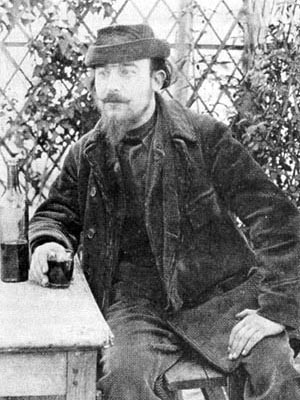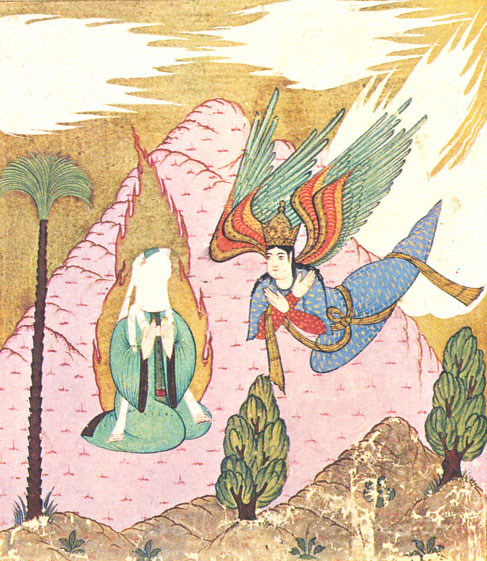|
Pièces Froides
The ''Pièces froides'' (''Cold Pieces'') are two sets of piano pieces composed in March 1897 by Erik Satie. Unpublished until 1912, they marked Satie's break from the mystical-religious music of his "Rosicrucianism, Rosicrucian" period (1891–95), and were a harbinger of his humoristic piano suites of the 1910s. Biographer Rollo H. Myers placed the ''Pièces froides'' high among Satie's piano works, writing, "Only a born musician of the finest sensibility could have conceived these limpid and so essentially 'musical' pieces which ought to be in the repertory of every pianist who is more interested in music than virtuosity." A third set of ''Pièces froides'', written in 1907 but shelved by the composer, was published posthumously. Background The title ''Pièces froides''—which can also be translated as ''Cold Rooms'' or ''Cold Cuts'' —has been viewed as a punning allusion to the dire poverty Satie experienced during his last years living in Montmartre. In July 1896, he ha ... [...More Info...] [...Related Items...] OR: [Wikipedia] [Google] [Baidu] |
Erik Satie
Eric Alfred Leslie Satie (born 17 May 18661 July 1925), better known as Erik Satie, was a French composer and pianist. The son of a French father and a British mother, he studied at the Conservatoire de Paris, Paris Conservatoire but was an undistinguished student and did not obtain a diploma. In the 1880s he worked as a pianist in café-cabarets in Montmartre, Paris, and began composing works, mostly for solo piano, such as his ''Gymnopédies'' and ''Gnossiennes''. He also wrote music for a Rosicrucian sect to which he was briefly attached. After a period in which he composed little, Satie entered Paris's second music academy, the Schola Cantorum de Paris, Schola Cantorum, as a mature student. His studies there were more successful than those at the Conservatoire. From about 1910 he became the focus of successive groups of young composers attracted by his unconventionality and originality. Among them were the group known as Les Six. A meeting with Jean Cocteau in 1915 led to the ... [...More Info...] [...Related Items...] OR: [Wikipedia] [Google] [Baidu] |
Florent Schmitt
Florent Schmitt (; 28 September 187017 August 1958) was a French composer. He was part of the group known as Les Apaches. His most famous pieces are ''La tragédie de Salome'' and ''Psaume XLVII'' ( Psalm 47). He has been described as "one of the most fascinating of France's lesser-known classical composers". Biography Early life and career Born in Meurthe-et-Moselle, Schmitt took music lessons in Nancy with the local composer Gustave Sandré. At the age of 19 he entered the Paris Conservatoire, where he studied with Gabriel Fauré, Jules Massenet, Théodore Dubois, and Albert Lavignac. In 1900 he won the Prix de Rome. During the 1890s he became friendly with Frederick Delius, who was living in Paris at the time, and Schmitt prepared vocal scores for four of Delius's operas: '' Irmelin'', ''The Magic Fountain'', '' Koanga'' and '' A Village Romeo and Juliet''. From 1929 to 1939 Schmitt worked as a music critic for ''Le Temps'', where he proved controversial. He was known ... [...More Info...] [...Related Items...] OR: [Wikipedia] [Google] [Baidu] |
Gabriel Faure
In the Abrahamic religions (Judaism, Christianity, Islam), Gabriel ( ) is an archangel with the power to announce God's will to mankind, as the messenger of God. He is mentioned in the Hebrew Bible, the New Testament and the Quran. Many Christian traditions – including Eastern Orthodoxy, Catholicism, Lutheranism, and Anglicanism – revere Gabriel as a saint. In the Hebrew Bible, Gabriel appears to the prophet Daniel to explain his visions ( Daniel 8:15–26, 9:21–27). The archangel also appears in the Book of Enoch and other ancient Jewish writings not preserved in Hebrew. Alongside the archangel Michael, Gabriel is described as the guardian angel of the people of Israel, defending it against the angels of the other peoples. In the New Testament, the Gospel of Luke relates the Annunciation, in which the angel Gabriel appears to Zechariah foretelling the birth of John the Baptist with the angel Gabriel foretelling the Virgin Mary the birth of Jesus Christ, re ... [...More Info...] [...Related Items...] OR: [Wikipedia] [Google] [Baidu] |
La Diva De L'Empire
"La Diva de l'Empire" (The Diva of the Empire) is a French popular song with music by Erik Satie and lyrics by and , composed in 1904. Along with "Je te veux" (1903) it is probably the best-known example of Satie's cabaret or "café-concert" idiom. It was premiered by singer , dubbed the "Queen of the Slow Waltz", in the musical revue ''Dévidons la bobine'' in Paris on July 26, 1904, and published that same year. Description The song is a cakewalk and an early attempt by a European composer to tackle nascent American jazz. John Philip Sousa and his band had introduced the cakewalk to France during their appearance at the Exposition Universelle (1900), 1900 Paris Exposition, but it gained little notoriety there until a danced version was performed in the revue (The Happy Negroes) at the Nouveau Cirque in October 1902. The show ran for over a year and sparked a national craze. Satie was intrigued with the new style and, as Darty's occasional accompanist and songwriter, prepared ... [...More Info...] [...Related Items...] OR: [Wikipedia] [Google] [Baidu] |
Jack In The Box (Satie)
''Jack in the Box'' (sometimes seen as ''Jack-in-the-Box'') is a work written by Erik Satie in 1899 for a pantomime-ballet (Satie called it a "clownerie", and also a "suite anglaise") to a scenario by the illustrator Jules Depaquit. Satie gave it an English title because English phrases were considered fashionable in Parisian society at the time. Satie's intention was to score it also for orchestra. However, after he wrote the piano score, he lost it some time after 1905. Satie believed it had gone missing on a bus and that it would never be found, but after his death it was found in his squalid apartment in Arcueil (some sources say it was hidden inside a notebook lodged down the back of his decrepit piano), along with the lost score for his marionette opera ''Geneviève de Brabant''. Depaquit's scenario has not survived. James Harding, Liner notes to HMV Greensleeves recording ESD 7069, Orchestra of the Royal Opera House, Covent Garden, conducted by John Lanchbery Sergei Dia ... [...More Info...] [...Related Items...] OR: [Wikipedia] [Google] [Baidu] |
Schola Cantorum De Paris
The Schola Cantorum de Paris ( being ) is a private conservatory in Paris. It was founded in 1894 by Charles Bordes, Alexandre Guilmant and Vincent d'Indy as a counterbalance to the Paris Conservatoire's emphasis on opera. History The Schola was founded in 1894 and opened on 15 October 1896 as a rival to the Paris Conservatoire. Alexandre Guilmant, an organist at the Conservatoire, was the director of the Schola before d'Indy took over. D'Indy set the curriculum, which fostered the study of late Baroque and early Classical works, Gregorian chant, and Renaissance polyphony. According to the ''Oxford Companion to Music'', "A solid grounding in technique was encouraged, rather than originality, and the only graduates who could stand comparison with the best Conservatoire students were Magnard, Roussel, Déodat de Séverac, and Pierre de Bréville." The school was originally located in Montparnasse; in 1900 it moved to its present site, a former convent in the '' Quartier Lati ... [...More Info...] [...Related Items...] OR: [Wikipedia] [Google] [Baidu] |
Cabaret
Cabaret is a form of theatrical entertainment featuring music song, dance, recitation, or drama. The performance venue might be a pub, casino, hotel, restaurant, or nightclub with a stage for performances. The audience, often dining or drinking, does not typically dance but usually sits at tables. Performances are usually introduced by a master of ceremonies (M.C.). The entertainment, as performed by an ensemble of actors and according to its European origins, is often (but not always) oriented towards adult audiences and of a clearly underground music, underground nature. In the United States, striptease, American burlesque, burlesque, drag shows, or a solo (music), solo vocalist with a pianist, as well as the Music venue, venues which offer this entertainment, are often advertised as cabarets. Etymology The term originally came from Picard language or Walloon language words ''camberete'' or ''cambret'' for a small room (12th century). The first printed use of the word ''kaberet' ... [...More Info...] [...Related Items...] OR: [Wikipedia] [Google] [Baidu] |
Messe Des Pauvres
The ''Messe des pauvres'' (''Mass for the Poor'') is a partial musical setting of the mass for mixed choir and organ by Erik Satie. Composed between 1893 and 1895, it is Satie's only liturgical work and the culmination of his "Rosicrucian" or "mystic" period. It was published posthumously in 1929. A performance lasts around 18 minutes. History In the early 1890s, Satie's fascination with medieval Catholicism, Gothic art and Gregorian chant led him to explore religious influences in his life and music. At first he was drawn to Joséphin Péladan's Rose + Croix movement, for which he acted as official composer from 1891 to 1892, and after breaking with Péladan he associated with the occultist writer Jules Bois, publisher of the religious esoteric journal ''Le coeur''. At the same time he was immersed in a bohemian lifestyle as a pianist at Montmartre cabarets, where his already eccentric behavior took on a growing penchant for buffoonery and exhibitionism. This paradox came to a h ... [...More Info...] [...Related Items...] OR: [Wikipedia] [Google] [Baidu] |






